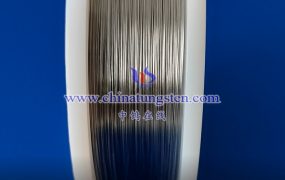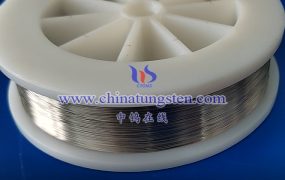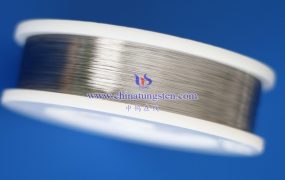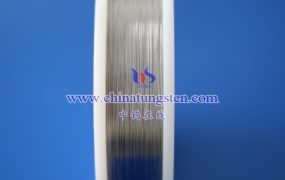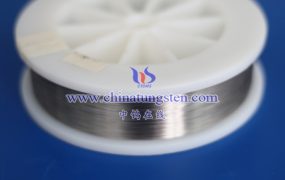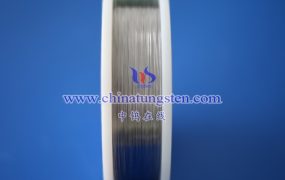Black tungsten wire exhibits weak diamagnetic behavior, with an extremely low magnetic susceptibility that opposes the direction of an external magnetic field. Unless it contains significant paramagnetic or ferromagnetic impurities (which is rare in practice), its magnetic behavior closely resembles the diamagnetism of pure tungsten. This characteristic ensures stability in magnetic field environments, making it suitable for applications sensitive to magnetic interference.
1. Basic Magnetic Properties of Tungsten
- Diamagnetism Dominates: Pure tungsten is a typical diamagnetic material. When placed in an external magnetic field, it generates a weak magnetization opposite to the field direction, with a negative and very small magnetic susceptibility (χ) of approximately -1.9×10⁻⁵.
- No Ferromagnetism or Paramagnetism: Tungsten’s atomic structure (4d⁴5s² electron configuration) results in few unpaired electrons and insufficient interatomic interactions to form ferromagnetic or paramagnetic ordering, so it lacks spontaneous magnetization or significant paramagnetic response.
2. Magnetic Behavior of Black Tungsten Wire
- Similar to Pure Tungsten’s Diamagnetism: If black tungsten wire is made from high-purity tungsten (e.g., >99.9% purity), its magnetic behavior mirrors that of pure tungsten, exhibiting weak diamagnetism with negligible magnetic susceptibility.
- Influence of Impurities or Alloying Elements:
- Paramagnetic Impurities: Trace amounts of paramagnetic elements like iron (Fe), cobalt (Co), or nickel (Ni) may introduce weak paramagnetic responses, but these are typically undetectable due to their low concentrations (<1%).
- Alloying Effects: If black tungsten wire is a tungsten alloy (e.g., tungsten-rhenium alloy), its magnetic properties may vary depending on the alloying elements. For instance, rhenium (Re) is also diamagnetic, so the alloy remains predominantly diamagnetic. However, if ferromagnetic elements (e.g., yttrium iron garnet-type tungstates) are present, complex magnetic behavior may occur, though this is rare.
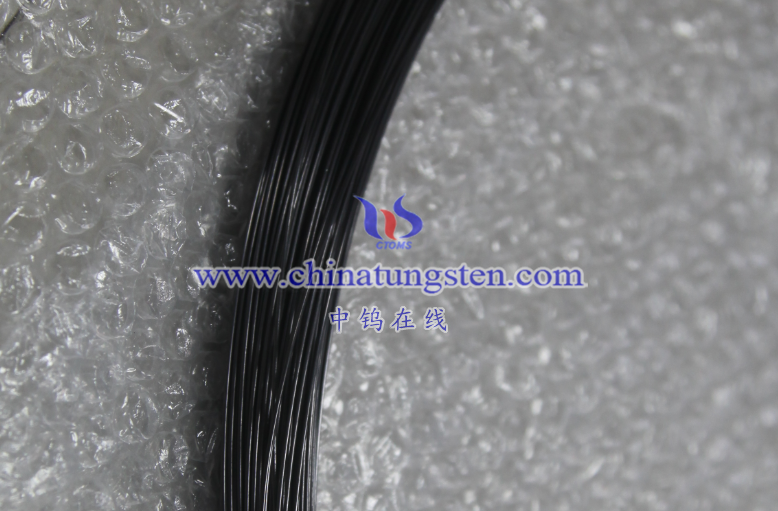
3. Magnetic Behavior in Practical Applications
- No Significant Magnetic Interference: In fields like electronics and lighting (e.g., incandescent lamp filaments, electron tube cathodes), the diamagnetic nature of black tungsten wire ensures it does not produce significant magnetization in external magnetic fields, avoiding interference with device performance.
- Behavior in Extreme Conditions: In strong magnetic fields or low-temperature environments, its diamagnetic response may slightly increase but remains far weaker than that of ferromagnetic or paramagnetic materials, with negligible practical impact.
4. Comparison with Other Materials
- Compared to Ferromagnetic Materials: Ferromagnetic materials like iron (Fe) or nickel (Ni) have magnetic susceptibilities on the order of 10³, vastly higher than tungsten’s diamagnetic susceptibility of -10⁻⁵.
- Compared to Paramagnetic Materials: Paramagnetic materials like oxygen (O₂) have positive magnetic susceptibilities slightly higher than the absolute value of tungsten’s diamagnetism, but both remain in the weak magnetism category.
More details of tungsten wire, please visit website: http://www.tungsten-wire.com.cn/
Please contact CHINATUNGSTEN for inquiry and order of tungsten wire:
Email: sales@chinatungsten.com
Tel.: +86 592 5129595
